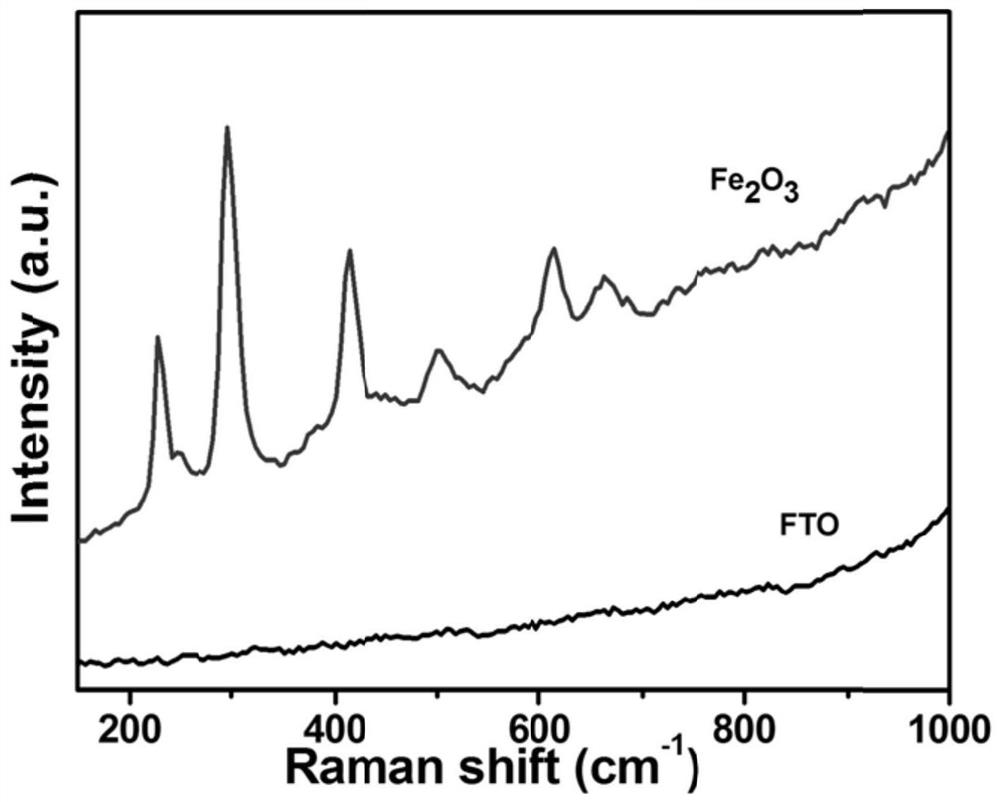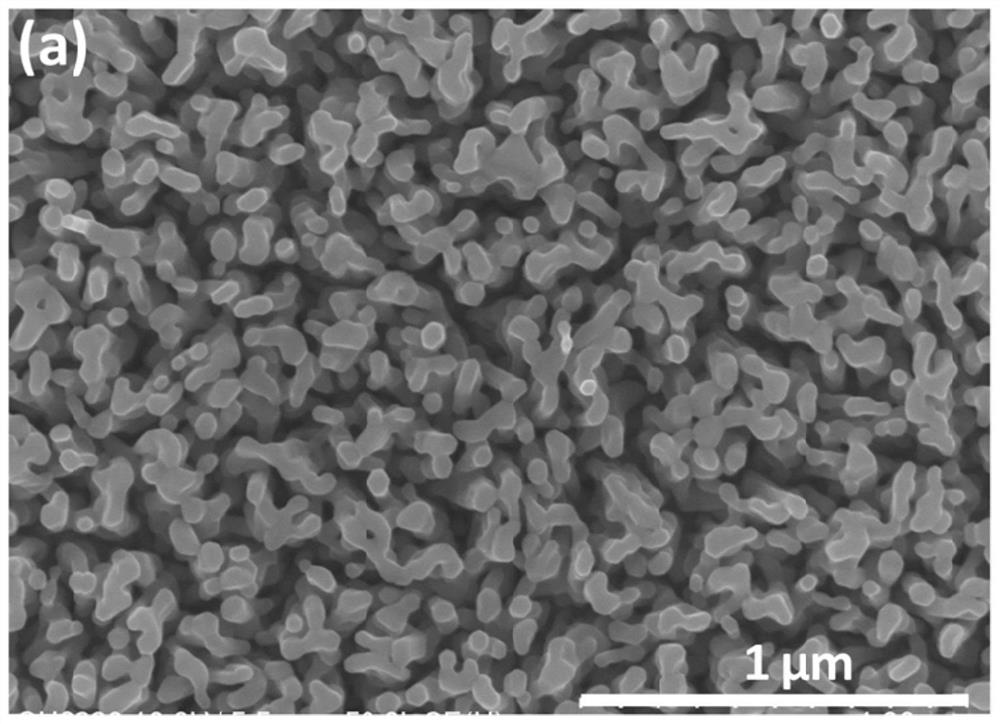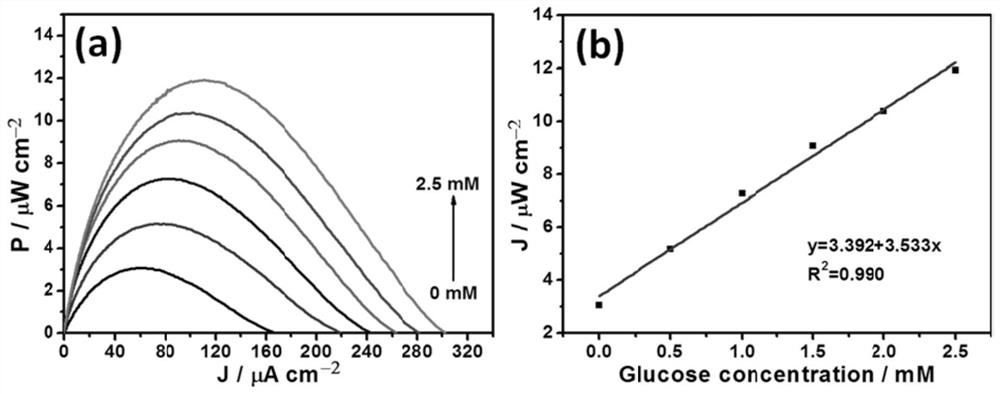Self-powered photoelectrochemical enzyme-free glucose sensor and preparation method and detection method thereof
A glucose sensor and photoelectrochemical technology, which is applied in the fields of material electrochemical variables, scientific instruments, instruments, etc., can solve the problems of no enzyme-free photoelectrochemical glucose sensor, the difficulty of long-term immobilization of glucose oxidase, and the influence of glucose detection results. Achieve the effect of low detection signal background, low cost and low cost
- Summary
- Abstract
- Description
- Claims
- Application Information
AI Technical Summary
Problems solved by technology
Method used
Image
Examples
Embodiment 1
[0031] This embodiment discloses a Fe 2 O 3 The preparation method of nanorod array electrode comprises the following steps:
[0032] (1) Cut the FTO conductive glass into dimensions of width × length = 2 cm × 2.5 cm, first boil it in a sodium hydroxide solution with a mass concentration of 5%, and then use acetone, ethanol and ultrapure water in turn to conduct the FTO conductive glass. ultrasonic cleaning;
[0033] (2) Take 0.2mol L -1 FeCl 3 solution and 0.3mol L -1 NH 2 CONH 2 The solution was put into a beaker, the washed FTO conductive glass was placed in the beaker, the mouth of the beaker was sealed with plastic wrap, and then the beaker was placed in an oven at 100 °C for 4 hours, then gently taken out and rinsed with deionized water. After rinsing, it was put into a crucible, dried at room temperature, calcined at 500°C for 3h, and then annealed at 750°C for 10min. to produce Fe 2 O 3 nanorod array electrodes, the Fe 2 O 3 Raman spectroscopy was performed...
Embodiment 2
[0036] The present embodiment discloses a detection method for a self-powered enzyme-free glucose photoelectrochemical sensor, which includes taking Fe 2 O 3 The nanorod array electrode was used as the anode and the platinum wire was used as the cathode, and a two-electrode system was established. The two electrodes were inserted into a 1.0 mol / L NaOH solution containing a certain concentration of glucose, and connected to an electrochemical workstation; the glucose was irradiated under simulated sunlight. Oxidized, and the discharge power was recorded. Based on the glucose substrate concentration and power density, a calibration curve for glucose detection was obtained.
[0037] The electrochemical workstation selected in this embodiment is Shanghai Chenhua CHI660D.
[0038] The glucose concentrations were 0 mmol / L under the irradiation of simulated sunlight, respectively.
[0039] 0.2mmol / L, 0.4mmol / L, 0.6mmol / L, 0.8mmol / L, 1.0mmol / L, 1.2mmol / L, 1.4mmol / L, 1.6mmol / L, 1.8m...
PUM
| Property | Measurement | Unit |
|---|---|---|
| thickness | aaaaa | aaaaa |
| thickness | aaaaa | aaaaa |
Abstract
Description
Claims
Application Information
 Login to View More
Login to View More - R&D
- Intellectual Property
- Life Sciences
- Materials
- Tech Scout
- Unparalleled Data Quality
- Higher Quality Content
- 60% Fewer Hallucinations
Browse by: Latest US Patents, China's latest patents, Technical Efficacy Thesaurus, Application Domain, Technology Topic, Popular Technical Reports.
© 2025 PatSnap. All rights reserved.Legal|Privacy policy|Modern Slavery Act Transparency Statement|Sitemap|About US| Contact US: help@patsnap.com



